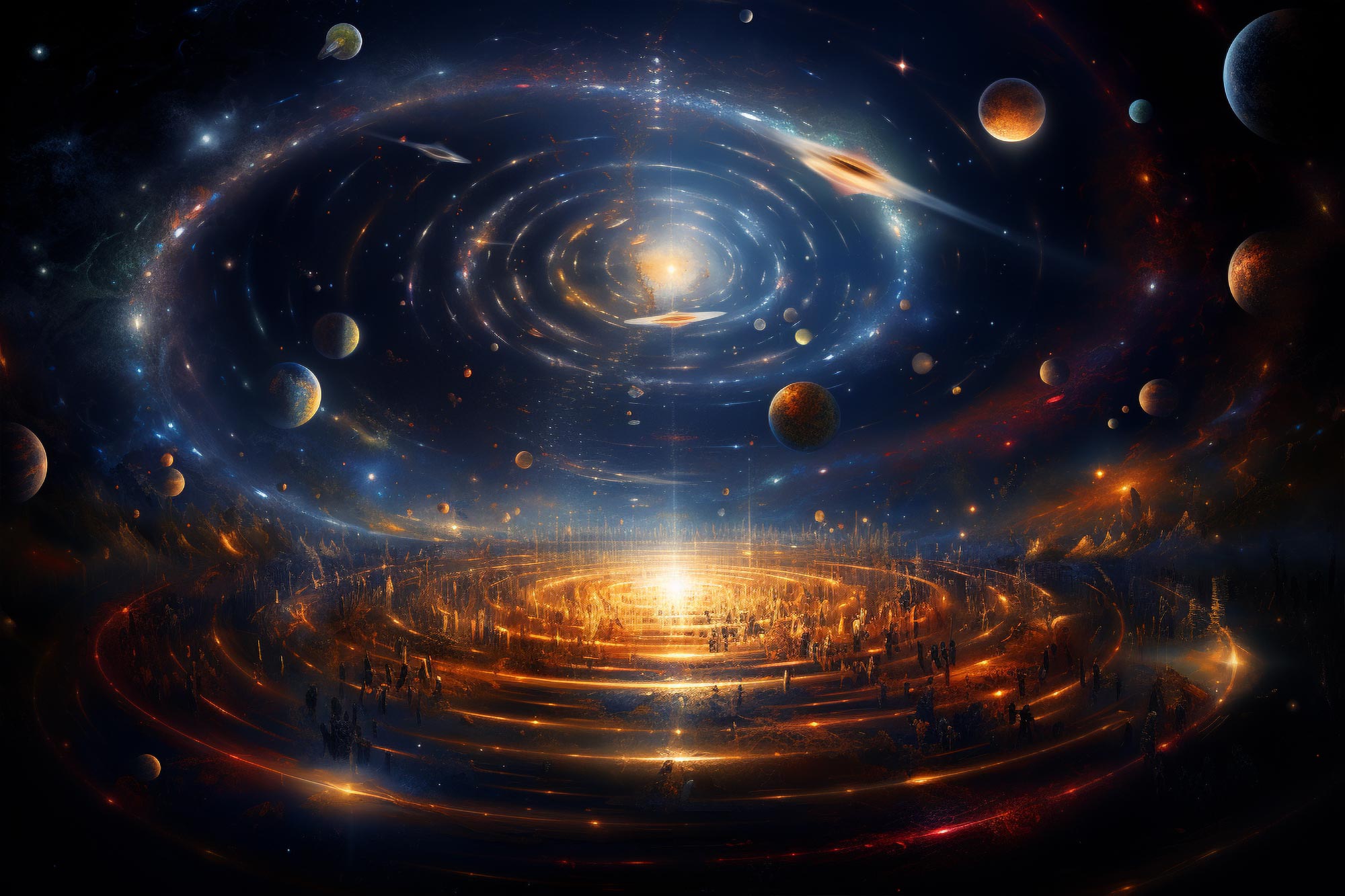تشير دراسة جديدة إلى أن عمر الكون قد يبلغ 26.7 مليار سنة ، أي ضعف العمر المقبول على نطاق واسع وهو 13.7 مليار سنة. النموذج الجديد ، الذي يتضمن نظرية زويكي للضوء المرهقة وثوابت اقتران ديراك التطورية ، يمكن أن يفسر وجود مجرات صغيرة ناضجة تشكلت بعد 300 مليون سنة فقط من الانفجار العظيم ، ويقدم تفسيرًا منقحًا للثابت الكوسمولوجي.
تقترح دراسة جديدة أن عمر الكون يمكن أن يبلغ 26.7 مليار سنة ، مما يتحدى التقدير المقبول على نطاق واسع والذي يبلغ 13.7 مليار سنة بناءً على نموذج توافق Lambda-CDM.
قد يكون كوننا أقدم بمرتين من التقديرات الحالية ، وفقًا لدراسة جديدة تتحدى النموذج الكوني السائد وتلقي ضوءًا جديدًا على ما يسمى بـ “المشكلة المستحيلة للمجرات المبكرة”.
“يطيل نموذجنا المصمم حديثًا من وقت تشكل المجرات بمليارات السنين ، مما يمنح الكون عمر 26.7 مليار سنة ، وليس 13.7 كما كان مقدَّرًا سابقًا.” المؤلف راجندرا جوبتا ، أستاذ مساعد في الفيزياء في كلية العلوم بجامعة أوتاوا .

“يطيل نموذجنا المصمم حديثًا أوقات تكوين المجرات بمليارات السنين ، مما يمنح الكون 26.7 مليار سنة ، وليس 13.7 كما كان مقدَّرًا سابقًا.” راجندرا جوبتا – أستاذ مساعد في الفيزياء بكلية العلوم بجامعة أوتاوا. الائتمان: جامعة أوتاوا
لسنوات ، كان علماء الفلك والفيزياء يحسبون عمر كوننا من خلال قياس الوقت المنقضي منذ[{” attribute=””>Big Bang and by studying the oldest stars based on the redshift of light coming from distant galaxies. In 2021, thanks to new techniques and advances in technology, the age of our universe was thus estimated at 13.797 billion years using the Lambda-CDM concordance model.
However, many scientists have been puzzled by the existence of stars like the Methuselah that appear to be older than the estimated age of our universe and by the discovery of early galaxies in an advanced state of evolution made possible by the James Webb Space Telescope. These galaxies, existing a mere 300 million years or so after the Big Bang, appear to have a level of maturity and mass typically associated with billions of years of cosmic evolution. Furthermore, they’re surprisingly small in size, adding another layer of mystery to the equation.
Zwicky’s tired light theory proposes that the redshift of light from distant galaxies is due to the gradual loss of energy by photons over vast cosmic distances. However, it was seen to conflict with observations. Yet Gupta found that “by allowing this theory to coexist with the expanding universe, it becomes possible to reinterpret the redshift as a hybrid phenomenon, rather than purely due to expansion.”
“Our newly-devised model stretches the galaxy formation time by several billion years, making the universe 26.7 billion years old, and not 13.7 as previously estimated.”
— Rajendra Gupta, Adjunct professor of physics in the Faculty of Science at the University of Ottawa
In addition to Zwicky’s tired light theory, Gupta introduces the idea of evolving “coupling constants,” as hypothesized by Paul Dirac. Coupling constants are fundamental physical constants that govern the interactions between particles. According to Dirac, these constants might have varied over time. By allowing them to evolve, the timeframe for the formation of early galaxies observed by the Webb telescope at high redshifts can be extended from a few hundred million years to several billion years. This provides a more feasible explanation for the advanced level of development and mass observed in these ancient galaxies.
Moreover, Gupta suggests that the traditional interpretation of the “cosmological constant,” which represents dark energy responsible for the accelerating expansion of the universe, needs revision. Instead, he proposes a constant that accounts for the evolution of the coupling constants. This modification in the cosmological model helps address the puzzle of small galaxy sizes observed in the early universe, allowing for more accurate observations.
On July 7, 2023, the study, “JWST early Universe observations and 𝚲CDM cosmology,” was published in the Monthly Notices of the Royal Astronomical Society (MNRAS) by Oxford University Press.
Reference: “JWST early Universe observations and ΛCDM cosmology” by R Gupta, 7 July 2023, Monthly Notices of the Royal Astronomical Society.
DOI: 10.1093/mnras/stad2032

“هواة الإنترنت المتواضعين بشكل يثير الغضب. مثيري الشغب فخور. عاشق الويب. رجل أعمال. محامي الموسيقى الحائز على جوائز.”





